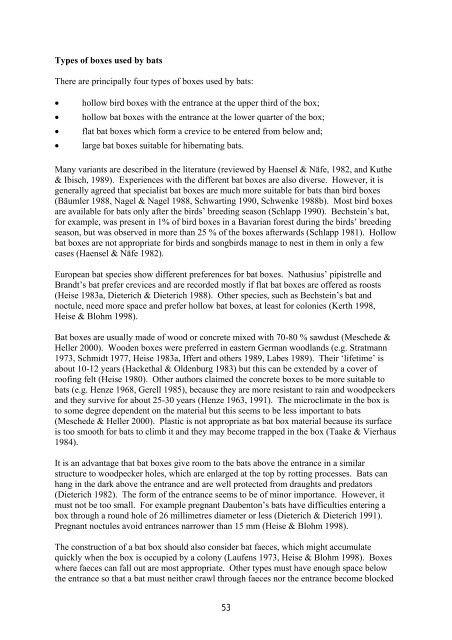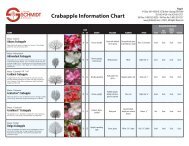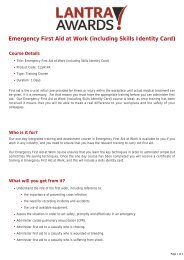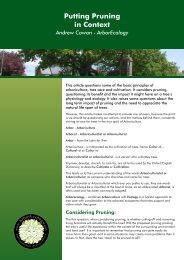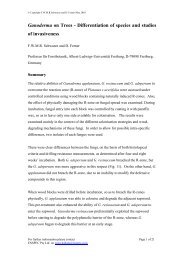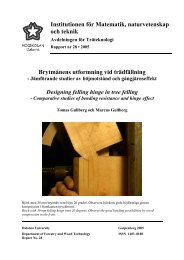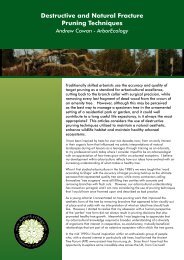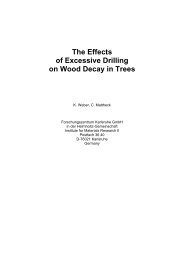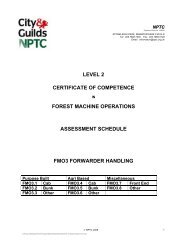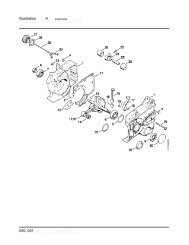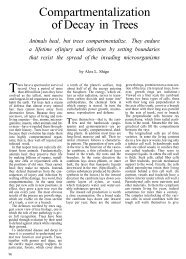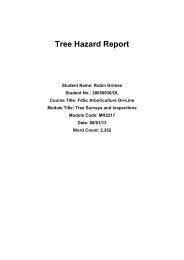working today for nature tomorrow - Justus-Liebig-Universität GieÃen
working today for nature tomorrow - Justus-Liebig-Universität GieÃen
working today for nature tomorrow - Justus-Liebig-Universität GieÃen
- No tags were found...
Create successful ePaper yourself
Turn your PDF publications into a flip-book with our unique Google optimized e-Paper software.
Types of boxes used by batsThere are principally four types of boxes used by bats:• hollow bird boxes with the entrance at the upper third of the box;• hollow bat boxes with the entrance at the lower quarter of the box;• flat bat boxes which <strong>for</strong>m a crevice to be entered from below and;• large bat boxes suitable <strong>for</strong> hibernating bats.Many variants are described in the literature (reviewed by Haensel & Näfe, 1982, and Kuthe& Ibisch, 1989). Experiences with the different bat boxes are also diverse. However, it isgenerally agreed that specialist bat boxes are much more suitable <strong>for</strong> bats than bird boxes(Bäumler 1988, Nagel & Nagel 1988, Schwarting 1990, Schwenke 1988b). Most bird boxesare available <strong>for</strong> bats only after the birds’ breeding season (Schlapp 1990). Bechstein’s bat,<strong>for</strong> example, was present in 1% of bird boxes in a Bavarian <strong>for</strong>est during the birds’ breedingseason, but was observed in more than 25 % of the boxes afterwards (Schlapp 1981). Hollowbat boxes are not appropriate <strong>for</strong> birds and songbirds manage to nest in them in only a fewcases (Haensel & Näfe 1982).European bat species show different preferences <strong>for</strong> bat boxes. Nathusius’ pipistrelle andBrandt’s bat prefer crevices and are recorded mostly if flat bat boxes are offered as roosts(Heise 1983a, Dieterich & Dieterich 1988). Other species, such as Bechstein’s bat andnoctule, need more space and prefer hollow bat boxes, at least <strong>for</strong> colonies (Kerth 1998,Heise & Blohm 1998).Bat boxes are usually made of wood or concrete mixed with 70-80 % sawdust (Meschede &Heller 2000). Wooden boxes were preferred in eastern German woodlands (e.g. Stratmann1973, Schmidt 1977, Heise 1983a, Iffert and others 1989, Labes 1989). Their ‘lifetime’ isabout 10-12 years (Hackethal & Oldenburg 1983) but this can be extended by a cover ofroofing felt (Heise 1980). Other authors claimed the concrete boxes to be more suitable tobats (e.g. Henze 1968, Gerell 1985), because they are more resistant to rain and woodpeckersand they survive <strong>for</strong> about 25-30 years (Henze 1963, 1991). The microclimate in the box isto some degree dependent on the material but this seems to be less important to bats(Meschede & Heller 2000). Plastic is not appropriate as bat box material because its surfaceis too smooth <strong>for</strong> bats to climb it and they may become trapped in the box (Taake & Vierhaus1984).It is an advantage that bat boxes give room to the bats above the entrance in a similarstructure to woodpecker holes, which are enlarged at the top by rotting processes. Bats canhang in the dark above the entrance and are well protected from draughts and predators(Dieterich 1982). The <strong>for</strong>m of the entrance seems to be of minor importance. However, itmust not be too small. For example pregnant Daubenton’s bats have difficulties entering abox through a round hole of 26 millimetres diameter or less (Dieterich & Dieterich 1991).Pregnant noctules avoid entrances narrower than 15 mm (Heise & Blohm 1998).The construction of a bat box should also consider bat faeces, which might accumulatequickly when the box is occupied by a colony (Laufens 1973, Heise & Blohm 1998). Boxeswhere faeces can fall out are most appropriate. Other types must have enough space belowthe entrance so that a bat must neither crawl through faeces nor the entrance become blocked53


